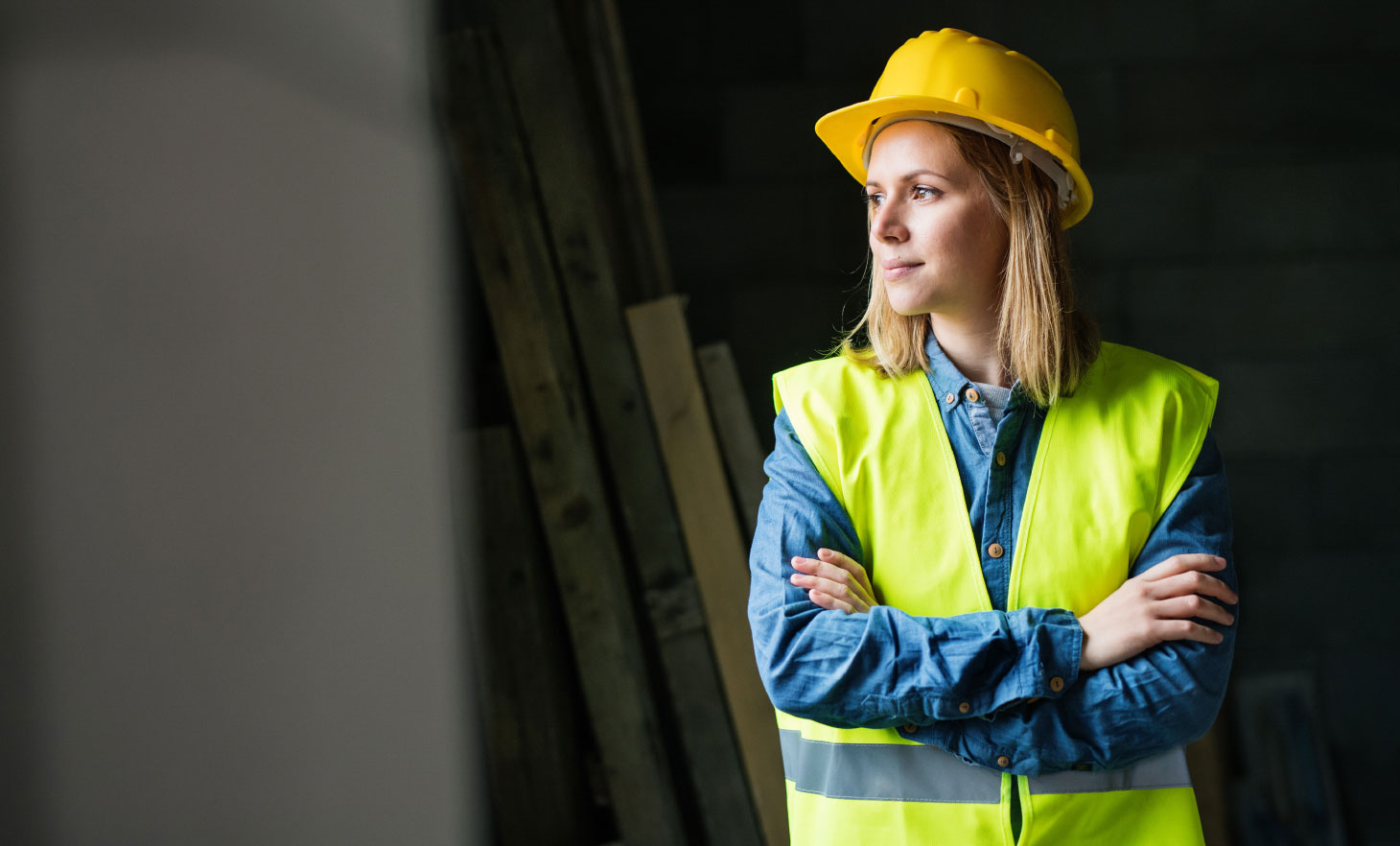
The importance of personal protective equipment (PPE) tailored for women cannot be overstated in the traditionally male-dominated field of construction. As more women join the industry, the need for appropriate PPE is a matter not only of equality, but safety.
PPE is designed to protect workers from workplace hazards of all kinds, from safety vests, gloves and boots, to fall protection harnesses and breathing respirators. However, historically the majority of PPE has been designed with a male physique in mind, often leading to ill-fitting equipment for women. This mismatch can be more than just uncomfortable, it can be unsafe.
Sara Feuling, P.E., remembers being handed an extra-large safety vest “that could have fit two of me” and being told that’s all they had for her first day of a new job in the construction industry. Her boss at the time didn’t see a problem, but Feuling knew that the vest was not only uncomfortable, it was dangerous.
Starting a new job, especially in the construction industry, which can involve potentially dangerous situations, is hard enough. Worrying that protective clothing will snag on something on Day 1 is not a good introduction to the industry.
Eventually, Feuling and her mother sewed-up the extra-large safety vest to improve the fit, and Feuling bought Class 2 shirts and other required PPE. Fast forward 15 years and the industry has made “great progress” in women’s PPE, Feuling says, “but there is still a long way to go” to properly fitting PPE being the expectation.
PPE saves lives
A proposed Occupational Safety and Health Administration rule seeks to bring the construction industry PPE requirements in line with other industries that explicitly require equipment to fit properly. Feuling is hopeful this change will help keep not only women safe, but workers of all sizes and shapes.
“It’s a safety issue,” she said. “And I think that people not in the industry don’t really realize that. [They’ll say], ‘Well, you just don’t like a vest that’s oversized, or boots that are not pretty.’ But when you’re a couple hundred feet in the air, boots that don’t fit are life or death.”
Worrying that protective clothing will snag on something on Day 1 is not a good introduction to this great industry.
Feuling started out working on roads in Wisconsin for the state department of transportation and then moved into project management roles that utilized her civil engineering background. She is now senior director, construction at the Association of Equipment Manufacturers (AEM), where she often talks with women in all sectors of the construction and infrastructure industry.
She is happy that women are now more likely to receive proper fitting PPE, or at the least know they can ask for it. There is more awareness and discussion around women’s PPE, more options from manufacturers and more understanding of why proper fitting PPE is so important, she says.
“I really do give the manufacturers a lot of credit there for really focusing more on the actual need of their customer,” Feuling said.
Next generation of women workers
Having proper PPE options is only half the battle. Companies need to understand and prioritize women’s PPE. Contractors that do so will contribute to the comfort, safety and retention of women in the construction industry, while also promoting a culture of inclusivity and safety.
“We keep trying to draw more women to the industry,” Feuling said. “We want that perspective. We want that workforce. But if we’re not meeting the needs of that demographic, no wonder they’re not looking at us as a viable option. And this is just one simple entry point to that.”

Feuling credits cultural shifts as pivotal in changing how women are treated in the industry. Many Millennials are now in leadership positions and the upcoming Gen Z is looking to the trades for a career path. These two generations are not afraid to speak their minds and ask for change.
“So, a little bit of that [is] challenging authority,” Feuling said. “You can’t make change if you’re not questioning and re-evaluating what you’re currently doing.”
Looking ahead
Feuling looks back over the past 15 to 20 years and sees a lot of progress in ensuring the safety of women workers. “The fact that we are having a conversation about properly fitting PPE for a woman in itself is a success story,” she said.
Feuling says there is still a long road ahead to proper PPE being the standard on Day 1 for women across all sectors of the large industry that is construction and infrastructure.
In a perfect world, she says that there would be three steps to keep women workers safe, starting on Day 1. First, all companies would have PPE options to order. Second, once a company hires a woman, they would order the proper fitting gear. Third, “the woman shows up and feels safe on her first day on the job,” says Feuling.
She is hopeful that in the near future, no woman will face the safety challenges of not having proper PPE to keep them safe, like she did during her first day on a jobsite.
“If we’re going to draw in this workforce and change how we tell our industry story to attract that workforce, we need to make the job safe for them when they get there,” Feuling said.